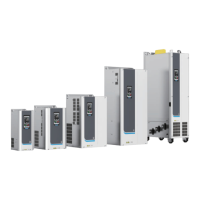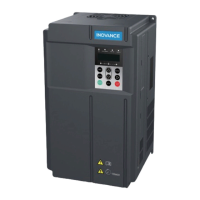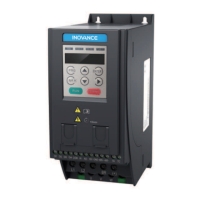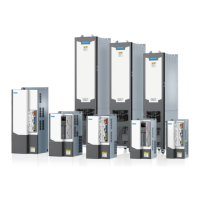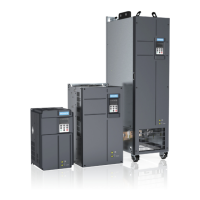Commissioning and Trial Run
‑60‑
2.2.15(Optional) Startup Mode Settings
Parame
ter
Code
Parameter
Name
Default Value Range Description
F6‑00 Startup mode 0 0: Direct start
1: Flying start
2: Vector pre‑
excited start (AC
asynchronous
motor)
3: SVC quick start
0: Direct start
This mode is applicable to most load conditions. Startup with
the startup frequency is applicable to load hoisting
applications such as elevators and cranes.
1: Flying start
This mode is applicable to scenarios where the motor is not
static before AC drive startup, for example, restart of a large‑
inertia fan upon an instantaneous power failure. In some
scenarios, the motor is already rotating before the AC drive is
started. This mode allows the AC drive to automatically
follow the motor speed and direction to start smoothly
without impacting the running motor. For example, when an
instantaneous power failure of the grid occurs, the AC drive in
the running state is powered off, but the motor is still running
due to inertia. In this case, the AC drive must detect the
actual speed of the motor to control the asynchronous motor
again. Otherwise, overcurrent or overvoltage will occur on
the AC drive during start, which may damage the power
transistor of the AC drive.
2: Vector pre‑excited start (asynchronous motor)
This mode is applicable to scenarios with large static load
resistance that requires large start torque. Pre‑excited start
can increase the start torque. This mode is applicable to
asynchronous motors only in the SVC and FVC modes. Before
startup, the AC drive pre‑excites the motor to speed up the
motor response and reduce the startup current. This mode
follows the same time sequence as startup after DC braking.
3: SVC quick start
This mode is applicable to most load conditions. Startup with
the startup frequency is applicable to load hoisting
applications such as elevators and cranes.
Note: Use flying start to start a motor that is rotating at a high
speed. Pre‑excited start and SVC quick start are applicable
only to AC asynchronous motors.

